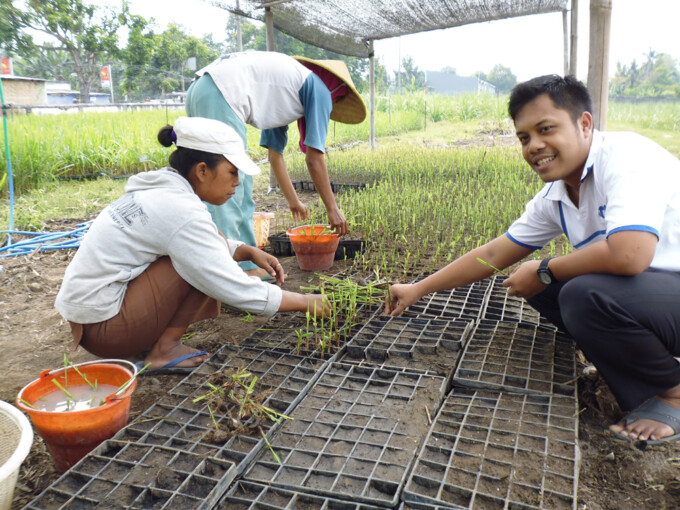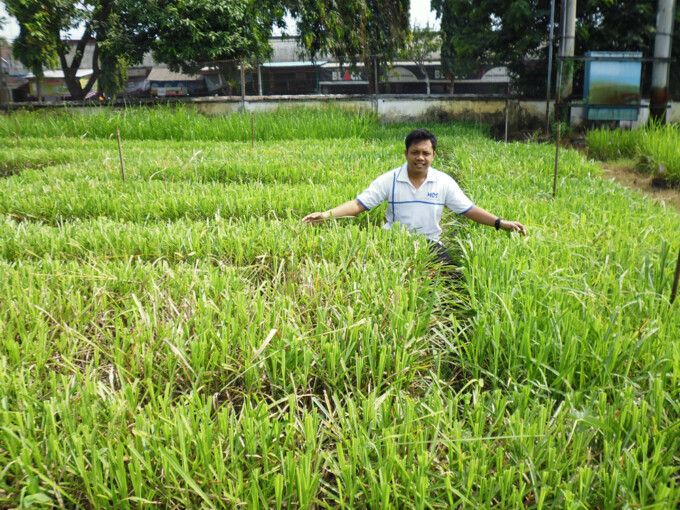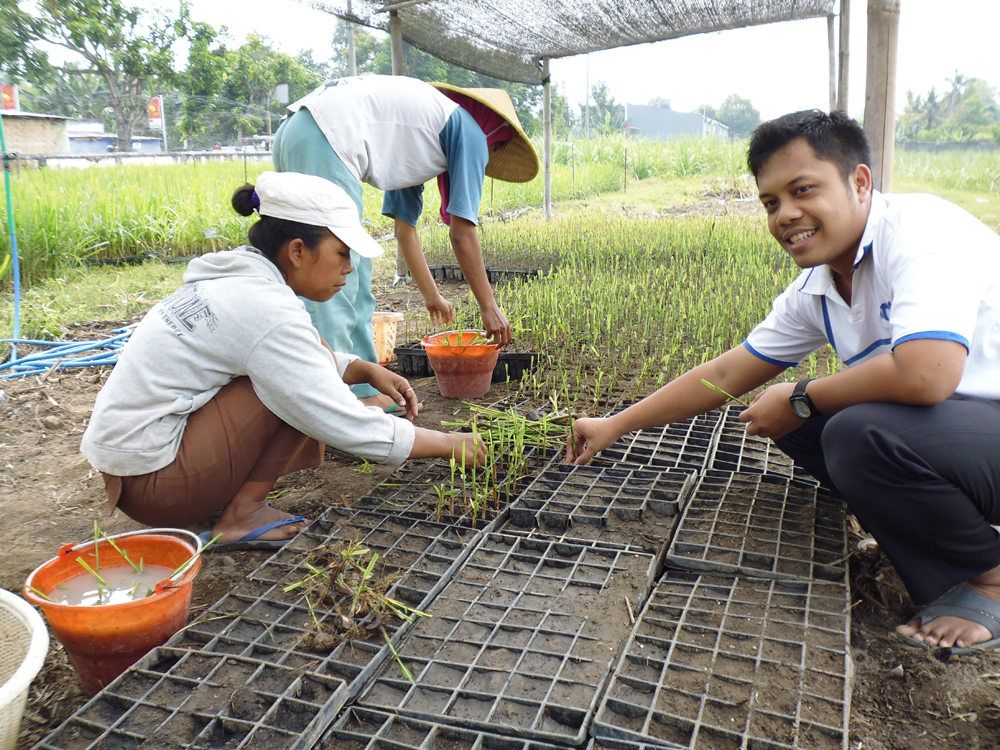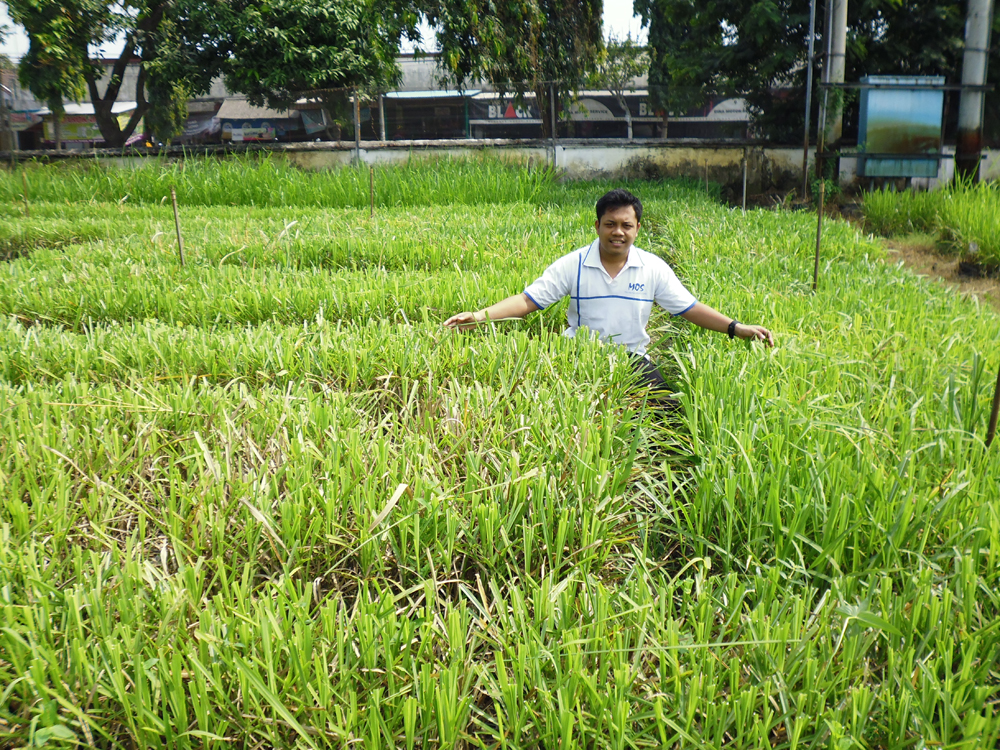UGM students have developed a more efficient sugar cane seed called Bud Chips that will produce more seeds whilst minimising use of seeds.
The technique was developed by three students Septhian Nur Caroko (Faculty of Agriculture), Anggi Muhtar Pratama (Faculty of Veterinary Medicine), and Tintani Bunga Restika (Faculty of Pharmacy) due to their concerns over the imbalance between national sugar production and consumption.
“The low sugar production is due to, among others, the low quality of seeds,” said Septhian on Friday (15/8) at UGM.
Hence, Septhian and two of his fellow students developed the Bud Chips technique to improve the quality by drilling around the core of the bud in circular motion. This will produce up to 10-15 seeds rather than the conventional 8-10.
The bud chips method will also save seeds six times better than the conventional one. For example, with the bud chips, only 1-2 tonnes of seeds are needed for each hectare of land, while the conventional method will need 6-7 tonnes per hectare.
“The production of the sugar cane will reach up to 70 quintals per hectare as opposed to the conventional method that produce up to 650 quintals per hectare,” he said.
Bunga added the bud chips method would give benefits to farmers. In one season that lasts approximately 3 months, there are 50,000 seeds with each costs around Rp600. “It means in three months the revenue is Rp13 million,” she explained.
The bud chips method has been applied at the Jambean village in Kediri regency. The area has been selected as East Java has the largest sugar plantation in Indonesia and this method has not been used by many farmers.
“This is one of the solutions for sugar self-production in Indonesia,” she concluded.






